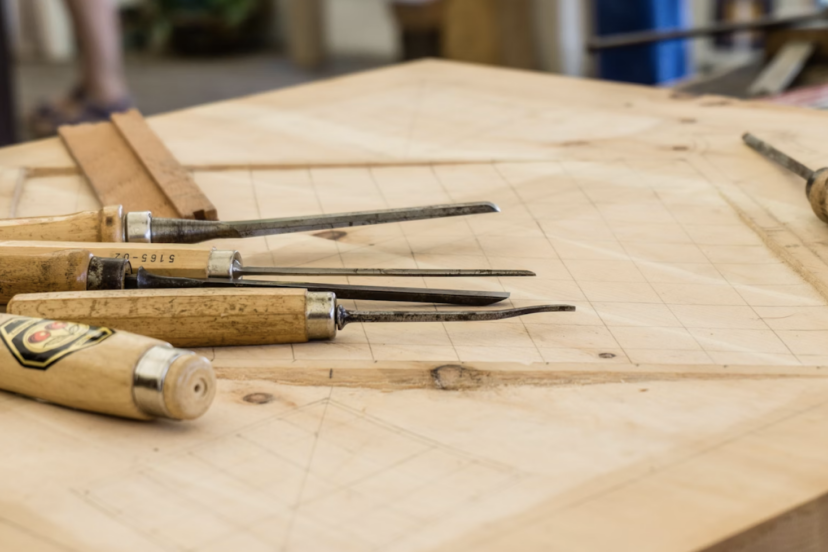Sustainable Woodworking: Key Practices and Materials for the Future
Sustainable woodworking minimizes environmental damage at multiple stages along the production process. It involves using responsibly sourced wood, working efficiently, reducing the use of harmful chemicals, and minimizing off-cuts from processing. Ultimately, it seeks to reduce environmental impact (or eliminate it entirely).
Naturally, sustainable woodworking practices have evolved over time as technology has developed. New environmental science insights are leading to refinements in approaches that woodworkers are taking on board.
For example, early sustainable woodworking efforts revolved around reforestation and sustainable logging. Woodworkers would try to use materials from recoverable forests. Later, this evolved into using more eco-friendly materials, like bamboo, and considering disposal, reducing the use of synthetic wood adhesives and chemicals.
This post discusses sustainable woodworking in more detail. It explores the practices and materials shaping the future, and how technology and eco-friendly wood materials are changing the field.
Sustainable Materials

Various sustainable woods and materials are now available to woodworkers. These include:
- Bamboo that doesn’t require irrigation or pesticides and releases more oxygen
- Reclaimed wood that doesn’t require deforestation and may lower greenhouse gas emissions
- FSC-certified lumber prevents organic forest degradation, allowing older forests to maintain their ecosystems
Unfortunately, working with these materials is challenging. For example, sourcing FSC-certified lumber and reclaimed wood can be more expensive than virgin products. Furthermore, reclaimed wood often contains contaminants that may be dangerous to end-users.
Sustainable wood may also have quality and consistency issues. Old bits of lumber often require treatment to align with consumer expectations. Woodworkers require specialist tools to work with these materials and often have to apply additional processing, such as removing nails or scraping off adhesives.
Eco-Friendly Practices
Even so, various green woodworking practices and techniques are available. These seek to minimize waste and use resources more efficiently.
One approach is to use precise cutting plans. These allow designers to fit the most pieces possible onto a single piece of wood, reducing waste. Another is to use offcuts. These can form additional components or be ground in chipboard.
Many sustainable woodworkers are also exploring the use of non-toxic finishes and adhesives. These eschew volatile organic compounds (VOCs), which can damage the environment and human health.
For example, many are using tung and walnut oils. These come from natural sources and don’t present the same dangers as synthetic products. Water and soy-based glues are also becoming more popular. These offer strong bonds (though not as potent as engineered adhesives) and can complement traditional joinery techniques.
Technological Advancements
Modern technologies are also helping to make woodworking more sustainable. Innovations like CNC machines and digital fabrication are playing a significant role by reducing waste and increasing efficiency.
For example, CNC allows woodworkers to make more precise cuts in materials, reducing offcut volume. Outputs are incredibly precise, reducing the need for secondary processing and eliminating wasteful errors.
Digital fabrication tools are valuable because they make customization and prototyping easier. Generative techniques and software allow woodworkers to design pieces more efficiently, minimizing the use of wasted material. As such, the entire industry can move to greener operations by making products more functional and less wasteful.
Economic and Social Impact
Sustainable woodworking’s likely economic and social impact is complex (if rolled out more generally). At first, producers will likely face higher material input prices, raising the cost to consumers. For example, FSC-certified wood is pricier than conventional alternatives because it has to go through various certifications and be grown under a specific regime.
However, longer term, society may reap benefits. These include:
- A more robust eco-sphere that supports a higher quality of human life than a degraded one
- Efficiency improvements through investments in CNC and digital design technology that slashes waste and boosts efficiency
- Using more offcuts and waste wood for products
- Generating more jobs in forestry and production processes, helping to create a more circular and sustainable economy
- The creation of more skills in the local community, helping individuals return to the land
Ultimately sustainable wood usage will likely create a new set of economic arrangements different from today’s extractive institutions. Capital production will benefit from the demand for efficiency-oriented machinery, while land usage will shift as more people get involved in sustainability initiatives and partnerships.
Case Studies
Several businesses already use sustainable woodworking practices, proving the concept can work even in today’s economy. These companies often adopt the above strategies, working on reclaimed wood projects or using machinery to make woodworking more efficient.
H.B. Fuller, a wood sealant manufacturer, is an excellent example. The company is considering various solutions to make the woodworking economy more circular. For instance, it invests in developing bio-based raw materials that can return to nature after use without causing harm. It also looks into “doing more with less,” finding ways to use available resources better.
The “mass balance” concept is central to H.B. Fuller’s approach. It believes in finding ways to turn renewable raw materials into production feedstocks in the value chain, reducing reliance on fossil fuels over time. Ultimately, this approach could reduce the use of extractive technologies and CO2 emissions.
Accoya is another example of a longstanding firm looking to reduce the impact of woodworking. The company’s wood comes from sustainable forests that provide environmental functions while also locking away CO2. The brand also uses acetylation processes that help the wood last longer, locking away the carbon dioxide it contains for longer. The brand’s products are now independently verified by the Cradle to Cradle Certified® Product Standard and certified by the Forest Stewardship Council® (FSC®).
Future Trends
Given the progress thus far, it is only natural to assume that sustainable woodworking will continue to develop. Consumers are demanding eco-conscious products, and environmental concerns are increasingly making them necessary.
For example, we may see more research into renewable and compostable materials that support sustainable land usage. Attention will likely constellate around bio-resins, fungal mycelium, hemp, and other low-impact, fibrous materials.
Adhesives will also likely become more sustainable as manufacturers concentrate more on natural polymers and plant-based oils. The use of harmful chemicals will decline, and methods of sticking bits of wood together will evolve to reduce pollution.
Finally, the sustainable woodworking industry will attempt to become more circular, creating a closed-loop economy. For example, modular furniture design will allow consumers to replace parts as they reach the end of their life, while take-back programs will enable manufacturers to reuse existing material.




